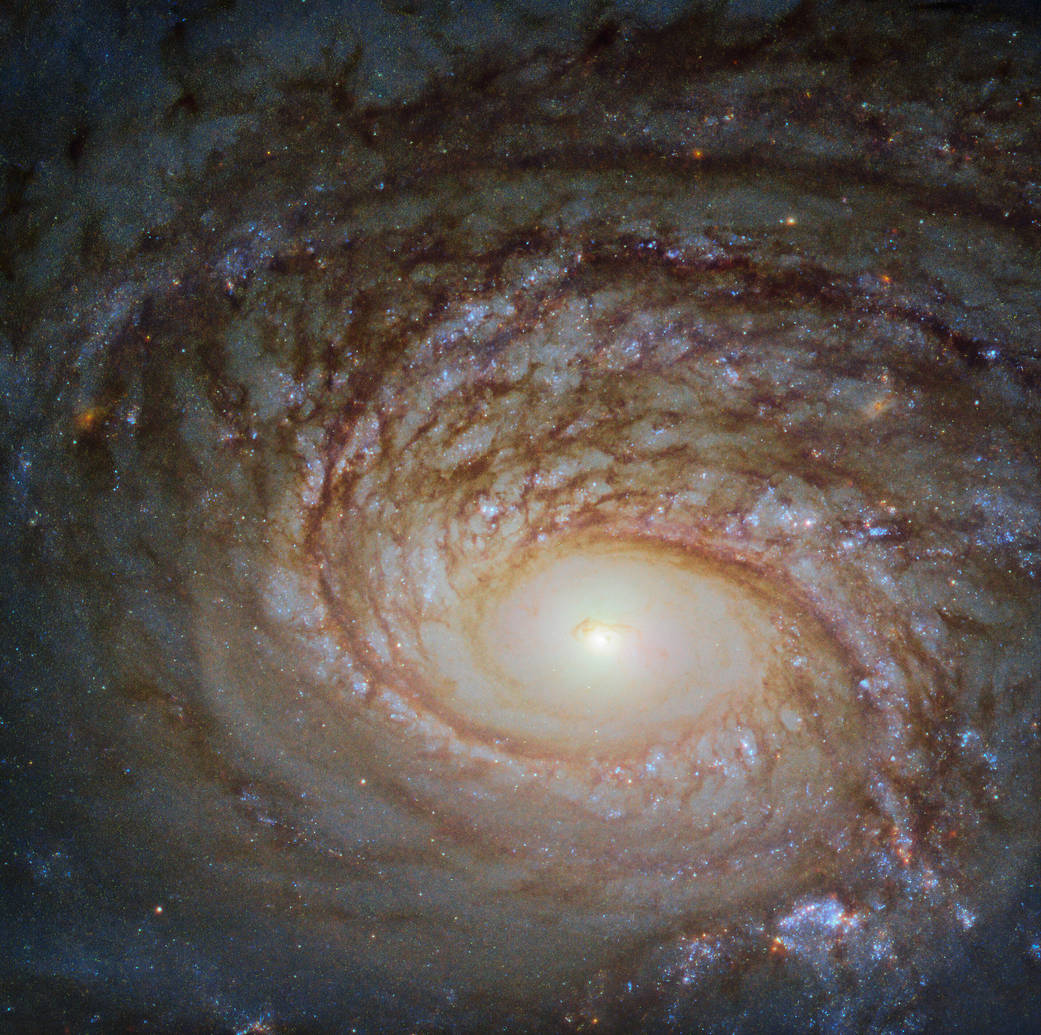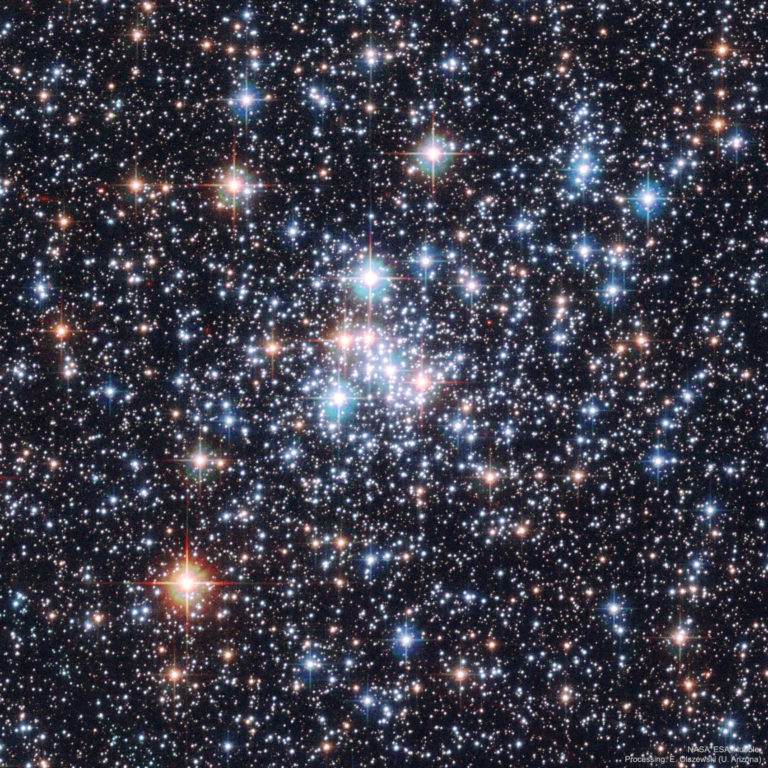NASA哈勃太空望远镜观测巨型星系
这个巨型螺旋星系或许会被称为“哥斯拉星系”(Godzilla galaxy),因为该星系有可能是其所在宇宙中已知的最大星系。该星系名为UGC 2885,比银河系宽2.5倍,其恒星数量则是银河系的10倍。 不过研究人员表示,UGC 2885星系是一个“温和的巨人”,因为它看上去没有与其他大型星系碰撞而过着相对静态的生活。在过去数十亿年间,它逐渐从星系间的丝状结构中吸收积累了氢,以缓慢而稳定的速度制造新恒星,其恒星诞生速率约为银河系的一半。事实上,该星系的超大质量中心黑洞也是一个沉睡的巨人。因为该星系似乎并不吞噬比它小得多的卫星星系,从而缺乏流入的气体。 肯塔基州路易斯维尔大学的本尼•霍尔维达(Benne Holwerda)用美国国家航空航天局(NASA)的哈勃太空望远镜对UGC 2885星系进行了观测,并以天文学家维拉•鲁宾(Vera Rubin,1928 – 2016)的名字给该星系起了个绰号,叫做“鲁宾星系”(Rubin’s galaxy)。 这张由哈勃太空望远镜拍摄的照片展示了巨型螺旋状星系UGC 2885,它位于距离地球2.32亿光年远的英仙座北部。该星系比银河系宽2.5倍,其恒星数量是银河系的10倍。在这幅图像中,我们可以看到银河系中的许多前景恒星,这些恒星可以通过它们的衍射峰来被识别。最亮的恒星在银河系的圆盘“乱入镜头”(photobomb)。该星系的昵称叫做“鲁宾星系”,以天文学家维拉•鲁宾(Vera Rubin ,1928-2016)的名字命名。 版权:NASA、欧洲航天局(ESA)和B. Holwerda(路易斯维尔大学) 霍尔维达表示:“我的研究在很大程度上受到了维拉•鲁宾在1980年关于UGC 2885星系大小的研究的启发”。维拉•鲁宾测量了该星系的旋转,并且由此发现了暗物质存在的证据,暗物质占据了该星系的大部分质量。“我们认为这是一个具有纪念意义的事情。在我们的观测中引用鲁宾博士的研究,这是我们最初的哈勃计划中的重要组成部分。” 霍尔维达于2020年1月6日在美国夏威夷檀香山举行的第235届美国天文学会年会上展示了其研究成果,试图解释了究竟是什么原因导致了UGC 2885星系的巨大规模。他表示:“我们目前还不太清楚该星系是如何变得这么庞大的。它的大小足以使其形成一个圆盘星系,而又不会触及任何其他空间。” 我们所知的一条线索是,UGC 2885星系在空间上是非常孤立的,并且附近没有任何星系可以撞击并破坏其圆盘形状。 随着时间的推移,UGC 2885星系是否吞噬了更小的卫星星系?抑或只是缓慢地为新恒星积累了气体?霍尔维达表示:“该星系似乎一直在缓慢生长。”利用哈勃太空望远镜的超高分辨率,霍尔维达的团队正在计算银河系光晕中的球状星团数量。大量星系团将会提供证据,证明它们是在数十亿年时间从被吞噬的较小星系中被捕获的。 NASA即将发射的詹姆斯•韦伯太空望远镜(James Webb Space Telescope)可以用来探测该星系的中心以及球状星团的数量。NASA计划中的广域红外探测望远镜(Wide Field Infrared Survey Telescope,WFIRST)将对其星系群,尤其是整个光环群进行更全面的普查。霍尔维达表示:“这两架太空望远镜的红外线捕捉能力将使我们更清楚地看到底层的恒星群。”这对哈勃太空望远镜可见光捕捉能力进行了补充,以追踪整个星系中稀疏的恒星形成。 在这幅图像中,我们可以看到银河系中的许多前景恒星,这些恒星可以通过其衍射峰来被识别。尽管UGC 2885星系实际上位于我们2.32亿光年之外的英仙座北部,其最明亮的部分看上去似乎位于星系盘的顶部。 来源: https://www.nasa.gov/feature/goddard/2020/nasas-hubble-surveys-gigantic-galaxy










